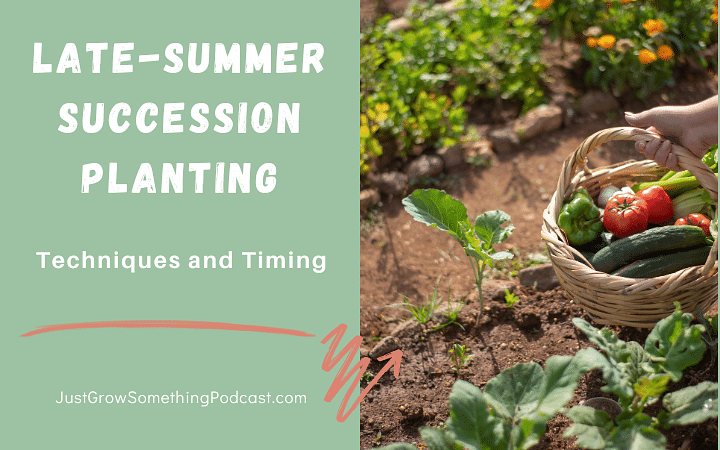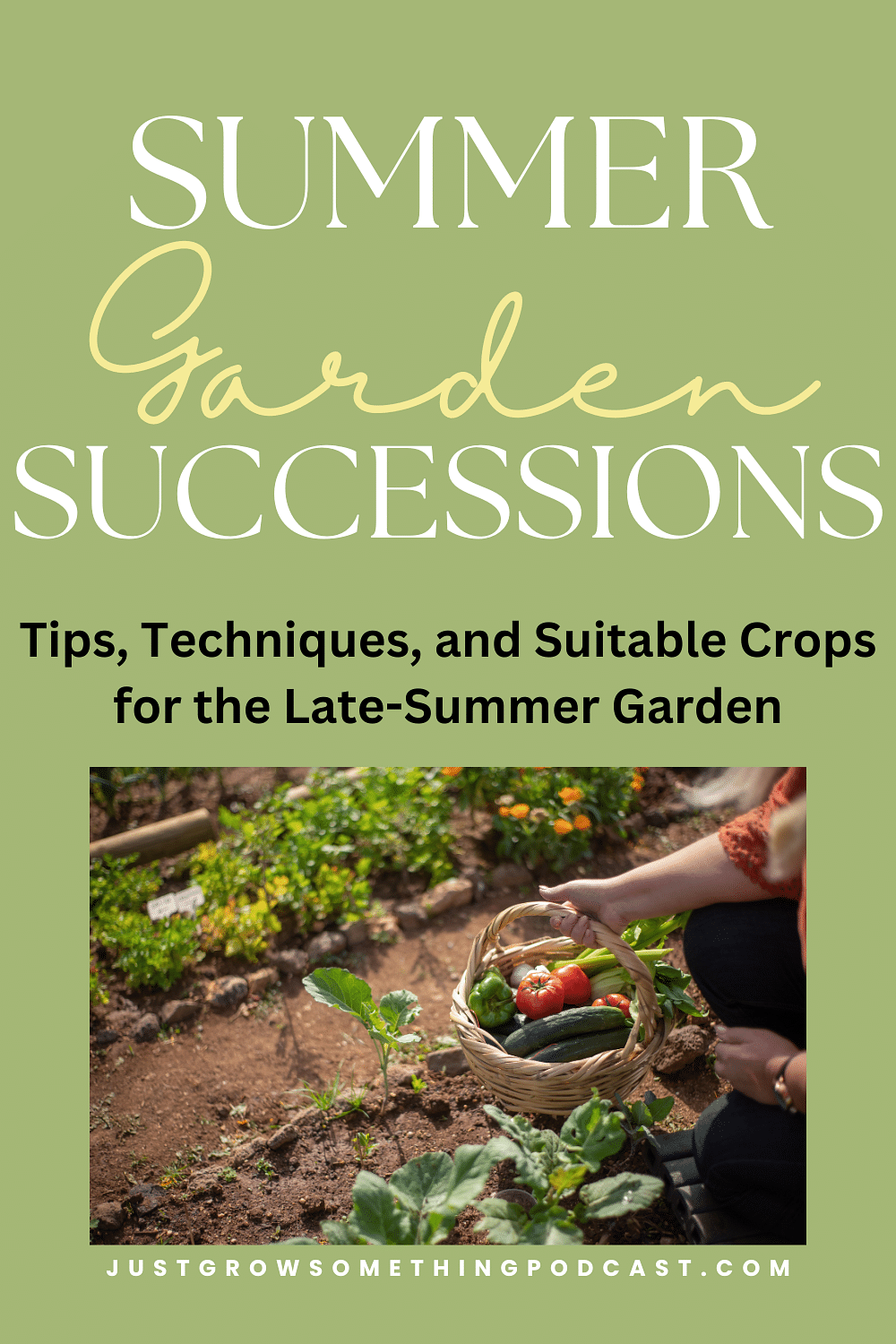
Succession planting is a really valuable technique to ensure a continuous harvest throughout the summer and into the fall. By staggering plantings of certain crops, we can extend the growing season and maximize our yields from our garden.
 Succession planting involves direct sowing or transplanting new crops at regular intervals throughout the growing season. As one crop is harvested or reaches the end of its lifecycle, the next batch is ready to take its place. This method keeps the garden productive and ensures a steady supply of fresh vegetables. Here are some key considerations for late summer successions:
Succession planting involves direct sowing or transplanting new crops at regular intervals throughout the growing season. As one crop is harvested or reaches the end of its lifecycle, the next batch is ready to take its place. This method keeps the garden productive and ensures a steady supply of fresh vegetables. Here are some key considerations for late summer successions:
1. Not all crops are suitable for summer succession planting. Focus on fast-maturing vegetables that can be harvested relatively quickly and are well-suited for multiple plantings during the warm season. This will definitely vary according to your climate.
2. Timing is crucial for successful summer succession plantings, even more so than for a spring or fall garden. Plan your planting schedule based on the average temperatures and weather conditions during summer in your area. For example, many of our southern U.S. gardeners have to plant green bean successions very early, then delay their late green beans until very late summer, almost fall, because the heat mid-summer is too much for them to be productive. Conversely, northern growers in the U.S. may be able to do multiple successions all through the summer with no break in the harvest. But your shorter growing season means paying attention to the number of frost-free days in your area and making sure that last summer planting isn’t done so late that the temperatures get too cool for production. Start by making a planting calendar to keep track of when to sow or transplant each crop during the summer and keep track of the specific maturity dates of the crops you're growing. Remember, fast maturing crops are going to be the best candidates for successive plantings, especially if you have extreme summer conditions on one side or the other. You’re not going to plan on multiple plantings of an heirloom tomato that takes 80 days to get to maturity, for example.
3. To make the most of your garden space, consider intercropping. This involves planting two or more crops with different growth habits close together.
4. To support successive plantings, maintain good soil fertility. After each harvest, amend the soil with compost or organic matter to replenish nutrients for the next crop.
5. With continuous planting, it's essential to stay vigilant about pest and disease management. Inspect your plants regularly for any signs of trouble and take appropriate measures promptly.
There are different techniques for succession planting, such as:
Direct Sowing. For crops that can be directly sown, like green beans, sow small batches of seeds every 1-2 weeks while the weather is conducive. For things like zucchini or yellow squash or cucumbers that have longer harvest periods but you know are going to be taken out by insect pests or disease, you can delay sowing those seeds to maybe every four weeks. This is how we make sure we have those crops all summer long, no matter what the pest problem. And, since the summer heat has warmed that soil there is no need for me to start them indoors, I can just pop the seeds in the ground and germination only takes a couple days.
Transplanting: For crops that are started indoors, like determinate tomatoes or things like broccoli and other brassicas, you’ll start the new seedlings in batches and transplant them as space becomes available in the garden according to the calendar you’ve created and based on the weather. For example, I’m supposed to be planting a succession of collard greens this week but the temperatures are supposed to be in the 100s F this week and that’s not conducive for any transplanting. So, I’ll hold off, leave them in their pots until it cools off a little next week and then plant them. A few weeks after that I’ll be moving on to fall planting and there is another younger batch of collards that will follow the final summer succession.
Using Successive Varieties: Some crops have varieties with varying maturity dates. Choose different varieties to stagger the harvest times based on how long it takes them to mature and you don’t have to worry about starting successive plants or remembering when to plant them. You start them all at once, plant them all at the same time, then let them mature at their own pace and harvest as they come ready. This is a great tactic that cuts down on the workload a little bit
With a little preparation you can extend your summer garden further into the season by using summer successions!
Your Friend in the Garden,

